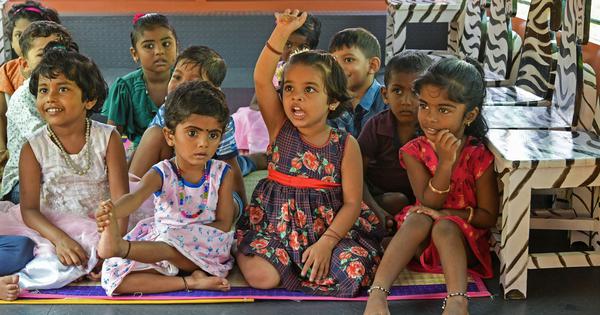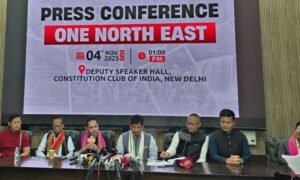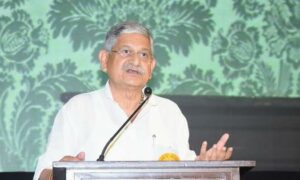
When Kerala Chief Minister Pinarayi Vijayan declared on November 1 that the state had eradicated extreme poverty, it was not merely an announcement – it was a milestone in India’s development story. In a country where discussions on poverty often circle around statistical debates, Kerala’s declaration invites a deeper reflection on what it means to ensure that no one is left behind.
Much of the national conversation in the days following the announcement has focused on whether such a claim can be empirically verified. Those are valid questions, but as with any large-scale social intervention, the answers cannot be found off the cuff. They require systematic academic inquiry using scientific methods, granular data, and careful evaluation.
That said, even as these studies unfold, Kerala’s effort deserves attention for its participatory design, long-term vision, and the sense of dignity it restores to those at society’s margins.
Participatory path
The State’s Extreme Poverty Eradication Project, launched in 2021, was not conceived as a top-down welfare scheme but as a participatory mission. The process of identifying extremely poor families began at the local level, involving panchayat representatives, workers for the Kudumbashree poverty eradication programme started in 1998, volunteers and officials.
Families were assessed across four key dimensions – food, health, housing, and income. Micro plans were prepared for each.
Through this exercise, over 64,000 families and more than one lakh individuals were identified as extremely poor. The state provided basic documents such as ration cards and Aadhaar to those who lacked them, ensured regular food supply through Kudumbashree networks, extended healthcare access and delivered housing under the LIFE (Livelihood Inclusion and Financial Empowerment) Mission.
Livelihood assistance was provided through self-help groups and employment schemes like the Mahatma Gandhi National Rural Employment Guarantee Scheme. Children from these households received educational support, scholarships, and safe housing where needed.
This convergence of welfare, livelihood, and human development represents Kerala’s distinct approach – integrating social support with empowerment.
Happy Kerala Piravi! On the 69th anniversary of our State’s formation, we celebrate a historic milestone: Kerala has officially been declared an ‘Extreme Poverty-Free State’. This marks the fulfilment of a collective dream, a promise that no one in Kerala will go without food,… pic.twitter.com/yQEFJTtd5t
— Pinarayi Vijayan (@pinarayivijayan) November 1, 2025
Long legacy
Kerala’s success today is not accidental. It is the outcome of decades of steady social investment and reform. As early as 1957, it became the first state to implement land reform laws, redistributing ownership and dismantling feudal inequalities.
Later, it became India’s first fully literate state, creating a citizenry capable of engaging with and demanding accountability from public institutions.
Every government since has built upon this foundation. Recent measures fit within a broader social-democratic ethos as welfare pensions were increased, the pay of workers in the Accredited Social Health Activist programme was enhanced and allowances for public employees were improved. These are not populist giveaways but steps that uphold dignity and social security.
The contrasts with the rest of India are striking. As per the latest National Family Health Survey, Kerala’s infant mortality rate stands at 4.4 per 1,000 live births, about one-fifth of the national average. The doctor vacancy rate in public health centres is virtually zero and the share of private healthcare providers is the lowest in the country, at 47.4%.
Kerala spends more on health than most states, yet achieves some of the lowest costs per patient with high-quality outcomes.
There is also a tangible sense of well-being one experiences when living in Kerala – especially in areas such as social support, healthcare, and education. True, the state faces challenges in generating enough jobs domestically. However, the high mobility, employability, and adaptability of Kerala’s workforce, particularly its youth, are themselves outcomes of a strong educational and social ecosystem.
The state’s development story thus extends beyond its borders – its people are among the most globally mobile in India, contributing remittances, skills, and cross-cultural capital that, in turn, fuel its economy. This dynamic underscores that Kerala’s model of development is not one-dimensional; it has combined welfare with capability, and equity with mobility.
Safety trampolines
Kerala’s welfare architecture has evolved beyond traditional safety nets. It now aspires to build what Singapore’s former deputy Prime Minister Tharman Shanmugaratnam once called safety trampolines – mechanisms that help individuals and families bounce back from adversity, not remain trapped within systems of dependency.
The Extreme Poverty Eradication Project exemplifies this approach. It is not about indefinite handouts, but about equipping the poorest with access to health, documents, skills, and employment – the tools to climb out of poverty with agency and dignity.
This mirrors Amartya Sen’s capability approach to development, which shifts the focus from income to freedom – the freedom to be healthy, educated, and productive. Kerala’s policies have long reflected this perspective, expanding people’s real choices and opportunities.
#Kerala is set to declare itself India’s first extreme poverty-free state.
But what does extreme poverty really mean , and how did Kerala overcome it?#extremepoverty #extremepovertyeradication #keralamodel pic.twitter.com/nmWoPSGWX3
— Kerala Government | കേരള സർക്കാർ (@iprdkerala) November 1, 2025
In mainstream economics, there is often an assumed trade-off between equity and efficiency. The argument goes that redistribution can slow growth. Kerala’s experience challenges this assumption.
In developing contexts, poverty is not merely a lack of income but a trap of multiple deprivations – illness, malnutrition, and lack of education reinforcing each other. By breaking these cycles through targeted welfare, the state has made people more productive, employable, and resilient. Redistribution here has been a driver of growth, not a constraint.
Well-designed welfare, then, is a productive investment. It builds human capital, enlarges the labour force’s capabilities, and strengthens the foundations of a modern economy.
Lessons for the nation
Kerala’s achievement offers valuable lessons for India. The Right to Food Act recognised the moral and legal imperative of ensuring basic needs for all citizens. Kerala shows what it takes to translate such rights into reality: decentralised governance, data-driven planning and community participation.
Replication elsewhere will not be easy. It requires administrative depth, political will and social trust. But the larger lesson stands: inclusive growth is possible when governments treat citizens as participants, not passive beneficiaries.
Declaring the eradication of extreme poverty is not an endpoint but a milestone. The task ahead is to ensure that those lifted out of deprivation do not relapse into it, by sustaining opportunities for work, education, and dignity. There may always be differences over terminology – between “destitution” and “extreme poverty”. But the policy challenge remains the same: to ensure that no one falls through the cracks.
Kerala’s model has shown that progress is not merely about income but about expanding human dignity. It is a reminder that even within the constraints of a federal structure, a state can lead the way in redefining what development means.
Freddy Thomas teaches economic analysis of law at the School of Law, Christ University, Bengaluru, and writes on the intersection of law, economics, and public policy.
📰 Crime Today News is proudly sponsored by DRYFRUIT & CO – A Brand by eFabby Global LLC
Design & Developed by Yes Mom Hosting






